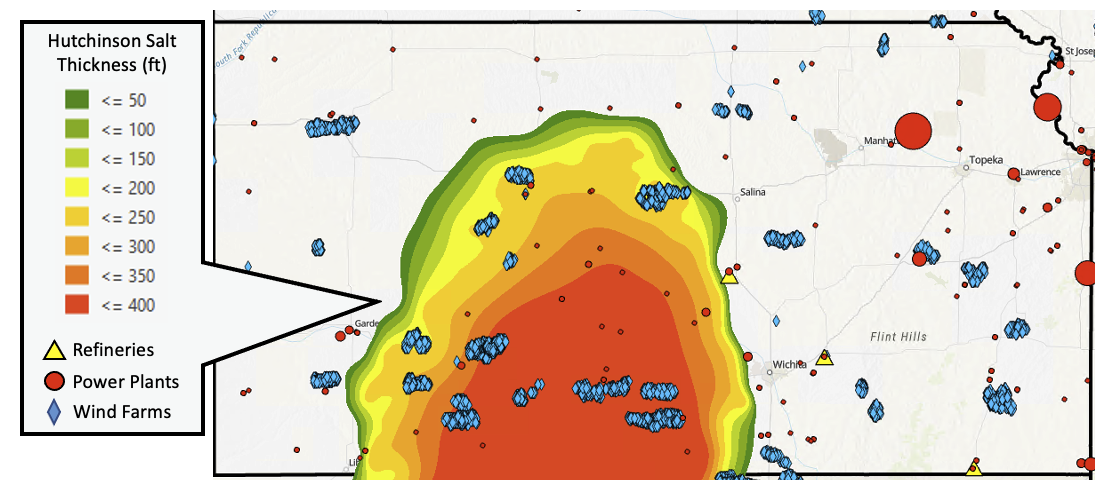Kansas Geological Survey to study hydrogen storage in underground salt beds

LAWRENCE — As wind and solar operations supply an increasing share of the country’s energy needs, a new project at the Kansas Geological Survey may help address the challenge of intermittent production from renewable sources.
The KGS, working with Evergy, will study the possibility of storing excess energy generated by coal-fired power plants in underground salt caverns for future use.
“Excess electricity can be used to split water into hydrogen and oxygen gas,” said Franek Hasiuk, KGS geologist and principal investigator for the project. “The hydrogen can then be stored in salt caverns for later use, either by burning it with natural gas in the power plant, adding it into pipeline natural gas for burning in home furnaces and stoves, supplying it to another business for use in chemical processes like fertilizer production, or using it to power vehicles.”
Natural gas and coal-fired plants, once the mainstay of the power industry, were designed to be always-on power generators to meet consumers’ electricity needs. Now, however, electrical grid operators often buy power first from wind, solar and nuclear operations and turn to natural gas and coal plants during periods of peak demand or when supplies from renewable sources are low.
This leads to periods when the plants are left idle, an inefficient and uneconomical use of resources. But a plant could be more economically viable if it could remain on and store any unneeded energy for future use.
“Hydrogen storage could allow Evergy to store large amounts of energy to deal with the problem of intermittent power production from renewables – no solar when it’s night, no wind power when it’s not windy,” Hasiuk said.
Extensive salt beds lie under the surface in Kansas. The Hutchinson Salt Member, deposited during the Permian Period, covers about 37,000 square miles in the subsurface in central and south-central Kansas and reaches a maximum thickness of more than 500 feet. Thick salt layers also occur in western and southwestern Kansas.
Salt has been mined in Kansas since the late 1800s. Caverns in the salt beds — some created during salt mining and others created specifically for storage —are used now for storing natural gas, natural gas liquids and other hydrocarbons.
The KGS, working with Evergy and supported by a $200,000 grant from the U.S. Department of Energy, will study the economic risks and benefits of storing hydrogen in these underground salt caverns. The study will include using modern digital methods to map salt beds at potential sites.
“Right now, it’s unclear whether undertaking a project like this is feasible for energy companies,” Hasiuk said. “Our study will help reduce the uncertainties related to hydrogen storage. At the end of the study, we may find out the costs of underground storage are as risky as or more risky than thought, but we should certainly be more confident about just how risky it is.”
If the one-year project successfully demonstrates the viability of hydrogen storage, the partners will move to a second phase consisting of more advanced engineering and design of a storage system.
Image: Map of Kansas showing thickness of the Hutchinson salt bed, power plants (red circles), wind farms (blue diamonds) and refineries (yellow triangles).
— Story by Julie Tollefson, Kansas Geological Survey